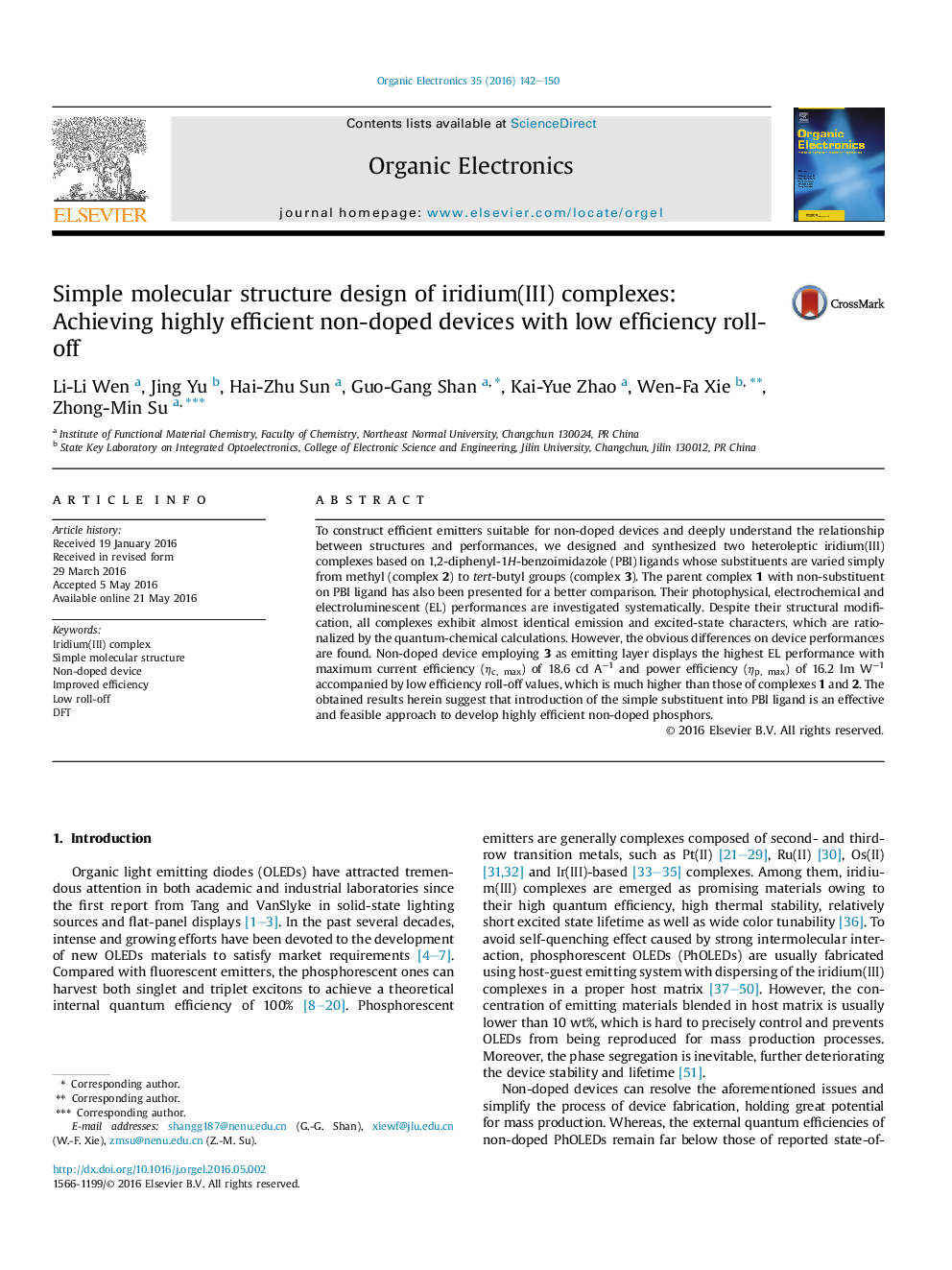| Article ID | Journal | Published Year | Pages | File Type |
|---|---|---|---|---|
| 1266813 | Organic Electronics | 2016 | 9 Pages |
•Three Ir(III) dyes with different substituents on 1,2-diphenyl-1H-benzoimidazole ligands are designed.•They exhibit bright lights with almost identical emissions in neat films.•The relationship between the chemical structures and EL performances were investigated.•Non-doped device N3 shows high efficiencies of 18.6 cd A−1 and 16.2 lm W−1.•Device N3 simultaneously displays low efficiency roll-off at high luminance.
To construct efficient emitters suitable for non-doped devices and deeply understand the relationship between structures and performances, we designed and synthesized two heteroleptic iridium(III) complexes based on 1,2-diphenyl-1H-benzoimidazole (PBI) ligands whose substituents are varied simply from methyl (complex 2) to tert-butyl groups (complex 3). The parent complex 1 with non-substituent on PBI ligand has also been presented for a better comparison. Their photophysical, electrochemical and electroluminescent (EL) performances are investigated systematically. Despite their structural modification, all complexes exhibit almost identical emission and excited-state characters, which are rationalized by the quantum-chemical calculations. However, the obvious differences on device performances are found. Non-doped device employing 3 as emitting layer displays the highest EL performance with maximum current efficiency (ηc, max) of 18.6 cd A−1 and power efficiency (ηp, max) of 16.2 lm W−1 accompanied by low efficiency roll-off values, which is much higher than those of complexes 1 and 2. The obtained results herein suggest that introduction of the simple substituent into PBI ligand is an effective and feasible approach to develop highly efficient non-doped phosphors.
Graphical abstractTo construct efficient emitters suitable for non-doped devices and deeply understand the relationship between structures and performances, three heteroleptic Ir(III) dyes employing modified 1,2-diphenyl-1H-benzoimidazole ligands whose substituents are varied simply from non-substituent (1) to tert-butyl groups (3) are synthesized. Non-doped device using 3 as emitting layer displays the highest EL performance with ηc, max of 18.6 cd A−1 and ηp, max of 16.2 lm W−1 accompanied by low efficiency roll-off values.Figure optionsDownload full-size imageDownload as PowerPoint slide
